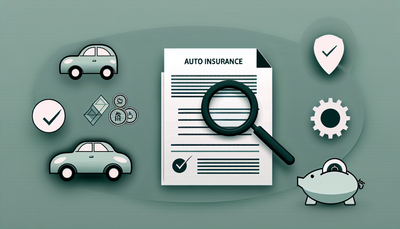Do You Really Need Full Coverage? Breaking Down Insurance Options

Do You Really Need Full Coverage? Breaking Down Insurance Options
When it comes to protecting your vehicle, navigating the world of auto insurance options can be overwhelming. Everyone has heard of "full coverage," but few truly understand what it entails—or if it's even necessary. In this post, we’ll demystify full coverage, help you assess your insurance needs, and provide clear guidance on comparing policies so you can make the best decision for your situation.
What Is Full Coverage Auto Insurance?
Contrary to popular belief, full coverage isn’t a specific type of policy—it’s a combination of several insurance components that offer broader protection. Typically, full coverage includes:
- Liability Insurance: Covers damage or injury you cause to others.
- Collision Coverage: Pays for damage to your car in an accident.
- Comprehensive Coverage: Protects against non-collision events like theft, vandalism, or natural disasters.
While full coverage offers peace of mind, it also comes with higher premiums. That’s why it's important to evaluate whether it aligns with your actual insurance needs.
When Full Coverage Makes Sense
Here are some scenarios in which full coverage may be worth the investment:
- New or Expensive Vehicles: If your car is newer or has a high market value, the cost of repairs or replacement could be steep without full coverage.
- Financed or Leased Cars: Lenders usually require full coverage to protect their investment.
- High-Risk Areas: Living in areas prone to theft, natural disasters, or high traffic incidents can justify the added protection.
When You Might Not Need Full Coverage
On the flip side, full coverage may not be essential if:
- Your Car Is Older or Has Low Value: If replacing your car costs less than your annual premium plus deductible, liability-only coverage might suffice.
- You Have Significant Savings: If you’re financially prepared to handle repairs or total loss, scaling back your coverage could save money.
Comparing Auto Insurance Options
To determine what fits best, conduct a thorough policy comparison. Here’s what to look for:
- Coverage Limits: Make sure you're comparing apples to apples across policies.
- Deductibles: Higher deductibles lower your premium but increase out-of-pocket costs.
- Discount Opportunities: Many insurers offer discounts for safe driving, bundling policies, or installing anti-theft devices.
- Customer Service & Claims Satisfaction: Don’t overlook service quality—read reviews and ratings.
Tailoring Coverage to Your Insurance Needs
The right coverage isn’t about having “everything”—it’s about having what you need. Factors to consider:
- Your driving habits
- The value of your vehicle
- Your financial safety net
A personalized approach ensures you’re not overpaying for unnecessary protection or underinsured in times of crisis.
Conclusion: Smart Coverage, Smarter Choices
While full coverage can offer robust protection, it’s not a one-size-fits-all solution. By understanding the components, assessing personal insurance needs, and conducting a thoughtful policy comparison, you can confidently choose the right auto insurance options for your lifestyle and budget.
Don’t let jargon or fear dictate your choices—empower yourself with knowledge and drive forward with confidence.
Ready to explore your coverage options? Start by reviewing your current policy and getting quotes tailored to your unique needs today!







